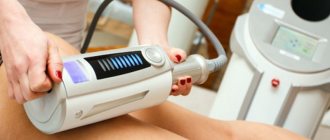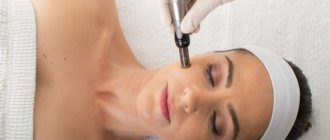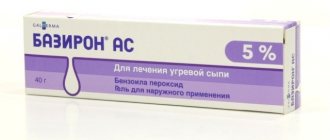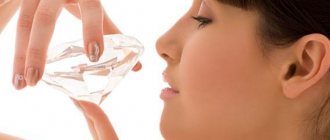Consultation with plastic surgeons with over 20 years of experience – free! Sign up by phone. Waiting for you! Beautiful women's legs have always attracted the admiring glances of men. Thin legs, or legs with an unattractive lower leg shape, can today be corrected using cruroplasty - surgery to enlarge the lower leg with a special implant.
. The risk of side effects is minimal. Today, many women, and often men, resort to correction of the shape of the lower leg. Contour plastic surgery of the lower leg (cruroplasty) helps restore the beauty and slimness of the legs in the event of any pathology or accident. However, as with any surgical intervention, to achieve the desired result, you should contact only an experienced specialist.
What is cruroplasty and a little history
Cruroplasty is a plastic surgery to correct the shape and size of the legs (this part of the body is designated by the Latin term crus or cruris). Unfortunately, it is less widely known than, for example, eyelid lift or abdominal liposuction, which today will not surprise anyone.
The first operation to correct shins was performed in 1972 on a Canadian jockey whose legs were too thin for uniform shoes. And since changes to the design of the boots were prohibited by the rules of horse racing, it was the shins that had to be changed.
Following the jockey devoted to his profession, polio victims who had suffered muscle atrophy as a result of their illness, as well as people with congenital and acquired deformities of the musculoskeletal system, turned to surgeons. Well, over time, the operation began to be performed to correct the shape and size of the legs of healthy patients for purely cosmetic purposes.
The essence of the technique
Cruroplasty is a plastic surgery aimed at correcting the shape and volume of the legs.
During the medical procedure, implants are used, which are elastic products with a smooth or textured surface and an elongated shape. The internal cavity is filled with silicone.
The implants are placed in a “case” formed by the calf muscles.
To do this, a small incision is made in the area below the knee. A foreign body is placed in it. Almost immediately after surgery, the lower leg takes on its natural shape.
The medical procedure has another name – contour plastic surgery of the legs.
This type of surgical operation appeared relatively recently, in the 70s.
Then pieces of silicone were used, which were processed and acquired the required shape immediately before the operation.
Modern technologies have significantly transformed the technique, but in our country not all aesthetic medicine clinics still provide such services.
Knowing about the nuances of cruroplasty and understanding what it is, you can find the best surgeon who specializes in leg correction.
From reviews of men and women, you can learn about the safety of the procedure and the rare occurrence of side effects.
Indications for use
There are two types of indications for cruroplasty.
1. Medical
- Pathology of development of the calf muscles.
- Their atrophy, which arose for a variety of reasons.
- Injuries that resulted in the removal of a large amount of soft tissue (animal bite, severe burn, injury as a result of a complex fracture with crushing of a muscle).
- Infectious or inflammatory processes - for example, an advanced abscess - leaving behind noticeable marks.
- False curvature or asymmetry of the lower extremities, not related to the structural features of the skeleton.
True curvature, which is a consequence of deformation of bones and joints, is dealt with by orthopedic surgeons, and their work has nothing in common with cruroplasty. Unless the patient may need replacement of the soft tissues of the lower leg after another specialist puts his musculoskeletal system in order.
True curvature is caused by bones, false curvature by soft tissues.
2. Aesthetic
- Inconsistency between the shape of the legs and the patient’s ideas of beauty.
- Minor defects in appearance that do not interfere with a person’s normal functioning, but cause psychological discomfort.
As a rule, in such cases, cruroplasty is not prescribed according to the client’s first “I want.” First, the doctor conducts a consultation, trying to find out whether the defect is really as significant as it seems, and based on its results, he makes a decision on the advisability of surgery.
Endoprosthetics technique
The operation is performed under local or general anesthesia, it all depends on the specific situation. How long does surgical correction of the lower leg take? On average, 1-2 hours. Technically, there is no point in describing all the stages of the operation, this is the work of the surgeon, but we will define the general points. A single incision is made in the popliteal fossa to access the tissue. The place for implantation of the endoprosthesis is the area under the calf muscle or the area under its fascia. The tissue is fixed with sutures and a bandage is applied. After surgery, knee socks or stockings with compression characteristics are used. Blood loss is insignificant, since the supporting, main circulatory structures are not damaged.
Preparing for surgery (cruroplasty)
There is a standard program of studies that must be completed before surgery. It is also recommended to do a Doppler ultrasound of the lower extremities, which will determine the presence of blood flow disorders, if any. Most often they can be caused by stenosis, thrombosis or vasospasm. Before hip replacement: give up bad habits and certain medications a week before, and abstain from eating and drinking a day before. It is extremely important to emotionally tune in to a positive result, calm down, and not be nervous.
How to choose the implant size?
Only a qualified specialist can determine the required size. Moreover, it is worth considering that there are no computer programs for modeling. What we get called a “computer model” is actually the usual processing of photographs in an editor. That is, it is logical and understandable that no photo editor will be able to create an exact model of the expected appearance. This is due to the fact that the editor cannot take into account the density and thickness of fabrics.
Deciding on the choice of implant is quite difficult. The choice is quite limited, so the surgeon does not have a large number of models for lower leg correction. Keep in mind that you need to select the right model only with a competent specialist.
Contraindications
Plastic surgery of the legs is not one of the complex operations. It does not require general anesthesia, does not require lengthy preparation, and the rehabilitation process takes a matter of weeks. However, taking it lightly would be a serious mistake.
Cruroplasty has an extensive list of contraindications:
- infectious, skin and autoimmune diseases;
- any chronic ailments in the acute stage;
- varicose veins and other problems with blood circulation in the legs;
- problems with blood clotting;
- diabetes;
- bronchial asthma;
- oncology;
- frequent swelling.
Women tend to find flaws in themselves even where there are none at all.
Even the wrong attitude of the patient can be a contraindication. For example, if a woman has unreasonably high hopes for surgery, believing that the new shape of her legs will radically change her whole life, the doctor may advise her to see a psychologist and work on her complexes instead of immediately going under the knife.
Varus curvature of the legs
Just as in the case described above, it negatively affects walking function, while flat feet develop even more rapidly. In patients with pathology of varus curvature of the legs, a reverse twist of the foot is formed. True arched curvature of the legs can be either congenital or acquired. If the acquired curvature is associated with injuries, then the birth defect appears against the background of serious diseases (such as severe rickets, inflammation of the bones, metabolic disorders, pathologies of the endocrine system).
Implants used
The surgeons prepared the first implants immediately before the operation. They were far from perfect; the anatomical features of a person were not always taken into account and after some time they required replacement - and therefore repeated intervention.
However, in our time, the production of implants has been put on stream and worked out almost to perfection.
Modern implants differ:
- Quality. In their production, highly cohesive silicone gel is used, characterized by special density and elasticity.
- Naturalness. With a correctly selected implant, it will not even occur to an outside observer to suspect that there is something wrong with the legs of the operated person.
- Security. If the reliable multilayer shell of the implant is accidentally damaged, the thick gel will retain its shape and will not creep under the skin.
- Anatomically thought out shape. Implants can be symmetrical, resembling a lens with a voluminous middle part, and asymmetrical, resembling a drop, located on the leg with the narrow end down.
- Variety of sizes. The implant can be selected strictly according to the leg of a particular person, using not only conventional measurements of thickness and length, but also computer modeling, which virtually eliminates an unsatisfactory result.
- Durability. The latest generation of implants do not need to be replaced every few years. They are installed once and for all.
Modern implants are very diverse
How are anatomical implants placed?
The location of the implant most often depends on its size. A small one is placed under the fascia - a layer of connective tissue that serves as a kind of case for the leg muscles. Together with subcutaneous fatty tissue and skin, the fascia reliably covers it, smoothing out the outline and creating the impression of natural volume.
However, a large fascia implant cannot be dealt with. So that its clear contours do not reveal the artificial origin of the lower leg, it is hidden under a muscle, which camouflages it much better.
Under the fascia, the contours of a large implant will be more noticeable, but under the muscle they will be almost invisible
Popular manufacturers
Implants from two manufacturers are recognized by plastic surgery specialists in the CIS countries.
Eurosilicone (Eurosilicone)
The French company Eurosilicone has been on the aesthetic medicine market for more than two decades. It produces implants designed to restore volume and correct the contours of the breasts, buttocks, testicles, legs, as well as different areas of the face - nose, cheekbones, chin. For shins they produce:
- 11 different sizes symmetrical;
- 4 sizes of asymmetrical (anatomical) calf implants.
All products comply with high international ISO and European EU quality standards and have a lifetime guarantee: immediately after the operation, the client is included in the warranty program free of charge, which will ensure replacement of the implant if anything unexpected happens to it.
Polytech (Polytech)
The company's head office is located in Germany. Among the products that Polytech produces, the main place is occupied by implants for the breasts, buttocks, testicles and, of course, lower legs. The latter are presented in 9 variants:
- symmetrical - 6 different sizes;
- asymmetrical (anatomical) - 3 different sizes.
Polytech implants have a shell made of highly elastic elastomer. It has a smooth sliding surface and an additional barrier layer.
The products of both companies are anatomically verified, aesthetically thought out and take root well in tissues.
Preoperative preparation
The path to perfect legs begins with the first step, namely an initial consultation with a surgeon. The doctor will determine:
- Is cruroplasty a necessity or a whim of a client keen on the pursuit of perfection;
- whether the patient needs the help of an orthopedic surgeon (for example, when bones, not muscles, are to blame for the curvature of the legs).
If no reasons for refusal are identified, the client, regardless of whether he has health complaints or is in excellent physical shape, will be sent for examination. It includes:
- general urine analysis;
- general and biochemical blood test;
- blood sugar test;
- coagulogram (test of blood clotting);
- analysis for HIV and hepatitis;
- Dopplerography of the vessels of the lower extremities;
- taking an electrocardiogram;
- fluorography.
If at this stage there are no contraindications to cruroplasty, the doctor will proceed to the most important part of the preparatory stage: choosing a suitable implant. Sometimes this takes into account not only the structural features of the patient’s legs, but also his desires. For example, men who are keen on bodybuilding often ask for larger implants than necessary. If the surgeon meets the client's wishes, good. If he objects, you will have to accept his decision. He definitely knows better which implant will look natural and will not lead to complications in the future.
The last preparatory step will be a conversation with an anesthesiologist.
Causes of curvature of the legs
The problem of curvature of the legs becomes noticeable already in adolescence; often, to diagnose this defect there is no need to even visit a medical facility; it is visible to the naked eye. The main reason for the formation of curvature of the legs is the lack of important vitamins and microelements in the child’s diet. Vitamin D and calcium are involved in the development of bones, as well as in maintaining their strength, therefore, to prevent degenerative processes of bones in childhood, it is important to monitor the child’s diet and saturate it with the necessary substances. It is also necessary to spend more time in the air and sun, which enriches the body with oxygen and normalizes metabolism.
A fairly common cause of the formation of curvature of the legs (not only in childhood, but also in adults) is trauma, especially when the tibia, femur or knee joints are affected.
The formation of a defect may be affected by intrauterine development: for example, if the mother, while carrying a child, suffered a serious illness or there is a genetic factor.
How is the operation performed?
Cruroplasty is extremely rarely performed under general anesthesia; epidural anesthesia is usually preferred. The patient completely loses sensation in his legs, but remains conscious and can communicate with the operating team.
For those who do not want to tickle their nerves by listening to the doctors’ remarks and trying to guess what exactly they are doing with their legs at the moment, sedation always remains. This is medicated sleep and is considered a safe alternative to general anesthesia.
Progress of the operation
- The future owner or the owner of perfect legs is placed face down on the operating table.
- Anesthesia is performed.
- The shins are treated with an antiseptic, isolated with sterile linen and marked.
- An incision is made in the popliteal fossa and a pocket for the implant is formed. As a rule, the length of the incision does not exceed 4 cm.
- The implant is placed under the skin, fascia, and sometimes muscle, and then its position is adjusted to simulate the appearance of the lower leg.
- The surgeon applies cosmetic stitches and a bandage to the wound, and compression garments are put on the patient’s legs.
The operation takes from 30 minutes to 1 hour. In some cases, cruroplasty is combined with liposuction of the thighs.
Possible complications
In the vast majority of cases, no serious complications are observed with cruroplasty; at the end of the rehabilitation period, the operated legs cannot be distinguished from natural ones in appearance, the endoprostheses cannot be palpated, and the scars in the natural fold under the knee are almost invisible.
However, like any surgical intervention, cruroplasty can be accompanied by complications - general (characteristic of all operations) and specific. Specific complications after plastic surgery include:
- Formation of a hematoma in the popliteal fossa;
- Seroma is an accumulation of serous fluid in the muscles around the endoprosthesis, caused by the reaction of adjacent tissues;
- Suppuration of a postoperative wound;
- Capsular contracture is the formation of a dense connective tissue membrane around the endoprosthesis, compressing the implant and deforming the contour of the lower leg;
- Dystopia of the endoprosthesis - displacement of the implant away from the installation site due to violation of the bandaging regime or improper formation of the “bed”;
- Asymmetry in the size and shape of the legs with significant tissue swelling or incorrect choice of implant;
- Contouring of the endoprosthesis - “bulging out” the contours of the implant, the dimensions of which turned out to be too large;
- Formation of rough keloid-type scars;
- Complete or partial loss of skin sensitivity on the inner or outer surface of the leg due to damage to the large or small cutaneous nerves during rough operation.
The fears of some patients about the negative impact of plastic surgery on the condition of the veins are not justified.
Rehabilitation and restoration of motor activity
Despite the fact that for patients without medical education, the introduction of silicone implants into the body seems to be a rather terrifying operation, rehabilitation after it does not take much time.
First stage
It lasts no more than two hours, during which the patient regains sensation in his legs. After this, you can get out of bed and take your first steps.
Second phase
It takes about a day, which a person spends in a hospital under the supervision of specialists. If no complications arise, the patient is discharged home.
Third stage
Lasts about a week. At this time, it is important to unload your legs as much as possible, so it is wise to combine the operation and recovery period with a vacation. As a rule, a person does not experience serious discomfort, although at times the incision areas may feel a nagging pain. If this causes significant discomfort, the doctor may prescribe an analgesic as well as an anti-inflammatory drug.
Fourth stage
After 7-10 days, the sutures are removed and the longest and easiest stage of recovery begins. In the next month you need:
- wear compression stockings;
- walk in comfortable shoes with a stable heel 3-5 cm long - this will relieve the load on the calf muscles and speed up the outflow of lymph;
- avoid significant physical activity;
- avoid baths, saunas, swimming pools, water parks and open reservoirs.
After about 3-4 weeks, most restrictions are lifted. But if we are talking about a professional athlete, you cannot start active training for about two more months.
Photos before and after
Photos before and after cruroplasty No. 1
Photos before and after cruroplasty No. 2
Photos before and after cruroplasty No. 3
Photos before and after cruroplasty No. 4
Photos before and after cruroplasty No. 5
Photos before and after cruroplasty No. 6
Advantages and disadvantages of cruroplasty
| pros | Minuses |
| Significant improvement in the shape of legs that are underdeveloped from birth or damaged as a result of exposure to external factors | High price |
| Simplicity of the operation and short duration of its implementation | Possible complications |
| Safety of implants, which is ensured by the use of cutting-edge materials and proven technologies | You will have to diligently restore your legs during the healing period, carefully following all the doctor’s instructions |
| Short (1-3 months) recovery period | Painful sensations during the healing period |
| The ability not to change your lifestyle after the implants take root and the wounds heal |
Why is it needed?
Shin plasty is primarily prescribed to eliminate secondary atrophy of the calf muscle tissue, which can result in impaired motor function. Cruroplasty is also indicated for such deviations as asymmetry of the calf muscles, lack of soft tissue volume, or the patient’s desire to make the calves more voluminous.
In addition, such plastic surgery allows you to correct false curvature of the legs, regardless of the severity. Such surgical intervention contributes to the partial or complete correction of forms with an X- or O-shaped deformity.
Risk of surgery
If you do not try to save money on the surgeon, conscientiously take all the prescribed tests and carefully follow the recommendations after discharge. The chance of developing complications after an essentially simple operation is extremely low. However, it cannot be completely excluded.
Excessive zeal with shin plastic surgery can lead to disastrous results.
What could happen to the owner of updated shins?
- Spontaneous movement of the implant, resulting in it taking an incorrect position. Corrected by repeat surgery.
- Contouring, that is, the introduction of the outlines of the implant through the skin. It can be corrected by removal, more careful selection of a new one, and repeated surgery a year later.
- Inflammation and suppuration of sutures due to poor treatment of wounds with an antiseptic. It is treated by removing the implants, opening the abscesses and taking antibiotics. Repeated surgery is possible no earlier than a year later.
- Formation of keloid scars. Due to the individual characteristics of the body. Treatment occurs with the help of special ointments.
- Bleeding in the pocket. It is treated by draining the hematoma.
- Intolerance to the components of the implant or increased sensitivity to a foreign body, as a result of which a connective tissue capsule is formed or serous fluid accumulates. Treated by extraction.
- Injury to nerve endings and loss of sensitivity. Treatment depends on the extent of the damage.
You can speak with confidence about the successful or unsuccessful completion of cruroplasty no earlier than after 2 months. During this time, the implant takes root in the tissues and occupies a clearly defined position, swelling goes away, and pain and discomfort disappear.
Cost of cruroplasty
Achieving the ideal shape of your legs without tiring workouts in the gym is not a cheap pleasure. A consultation with a good plastic surgeon alone costs 2000-3000 rubles.
If you trust someone with your legs, then only an experienced surgeon.
Add here the cost of the operation and the implants themselves, multiply by the qualifications of the doctor and the level of the clinic, add the price for a hospital stay and the amount will be 40,000 - 250,000 rubles.
Prices for cruroplasty in Moscow
| Clinic | Cost, rub |
| Clinical Center on Yauza | 40 000 |
| Medical | 50 000 |
| Family Clinic | 120 000 |
| Center for Endosurgery and Lithotrepsia "CELT" | 130 000 |
| International Center for Health Protection on Oktyabrskaya | 170 000 |
| Clinic "Sharm Gold" | 250 000 |
Prices for cruroplasty in St. Petersburg
| Clinic | Cost, rub |
| Your own clinic | 80 000 |
| Clinic "Degas" | 90 000 |
| Clinic "Ramy" on Kirochnaya | 96 000 |
| "SM-Clinic" on Vyborgsky | 120 000 |
| Clinic "Scandinavia" on Malaya Zelenina | 148 500 |
| Beauty Institute "Galaktika" | 180 000 |
Popular questions
Are all implants today installed for life?
Yes, new generation implants no longer need to be changed if the operation went without complications or the patient himself, after some time, did not decide to get rid of them.
Is surgery performed on only one leg if it is significantly smaller than the other?
Yes, they do.
How do I remove implants if I no longer want to wear them? How much does it cost?
The operation is performed under general anesthesia and costs 30,000-90,000 rubles.
If the implants have taken root well, but I want to change their size to a larger one, how soon can I resort to surgery?
Depending on the course of the healing process, it should take from 6 to 12 months.
Is it possible to get a consultation and choose an implant based on a photo of your legs?
No, a personal meeting with a plastic surgeon is required.
Is it worth doing cruroplasty before pregnancy or is it better to wait to avoid complications with swelling?
As a rule, pregnancy does not affect the condition of implants that have taken root, but to be completely sure, it is better to notify the doctor in advance about your plans to have children and ask his opinion on the timing of the operation.
Doctors' opinions
Despite the fact that cruroplasty lags significantly behind other plastic surgeries in popularity, you can find many reviews about it on the Internet. For example, a plastic surgeon with many years of experience shares his opinion on shin correction.
Plastic surgeon, Dmitry Viktorovich Krysin, expresses his view on the operation.
Plastic surgeons and clinics specializing in Cruroplasty surgery:
Mamedov Rusif Plastic surgeon
Specialization
- Mammoplasty
- Rhinoplasty
- Facial plastic surgery
Sergey Demin Plastic surgeon
Specialization
- Mammoplasty
- Abdominoplasty
- Lipofilling
- Liposuction
Farhat Fuad Plastic surgeon
Specialization
- Mammoplasty
- Abdominoplasty
- Cruroplasty
- Liposuction
Comments and questions
Karina 12/03/2017 at 03:42 pm # Reply
Thank you very much for such detailed information about this type of operation
Patient reviews
Patients actively share reviews with each other. In response to the girl’s request to tell her whether anyone on the forum had undergone cruroplasty, one of the participants replies that she is satisfied with the results of the operation, although the scars have not completely disappeared.
And this woman shares the experience of a friend who achieved the ideal shape of her legs with the help of cruroplasty.
A forum participant says that the implant is indistinguishable from real muscles, and attaches a photo as proof.
But this girl didn’t like the result. Most likely due to a poorly selected implant.











